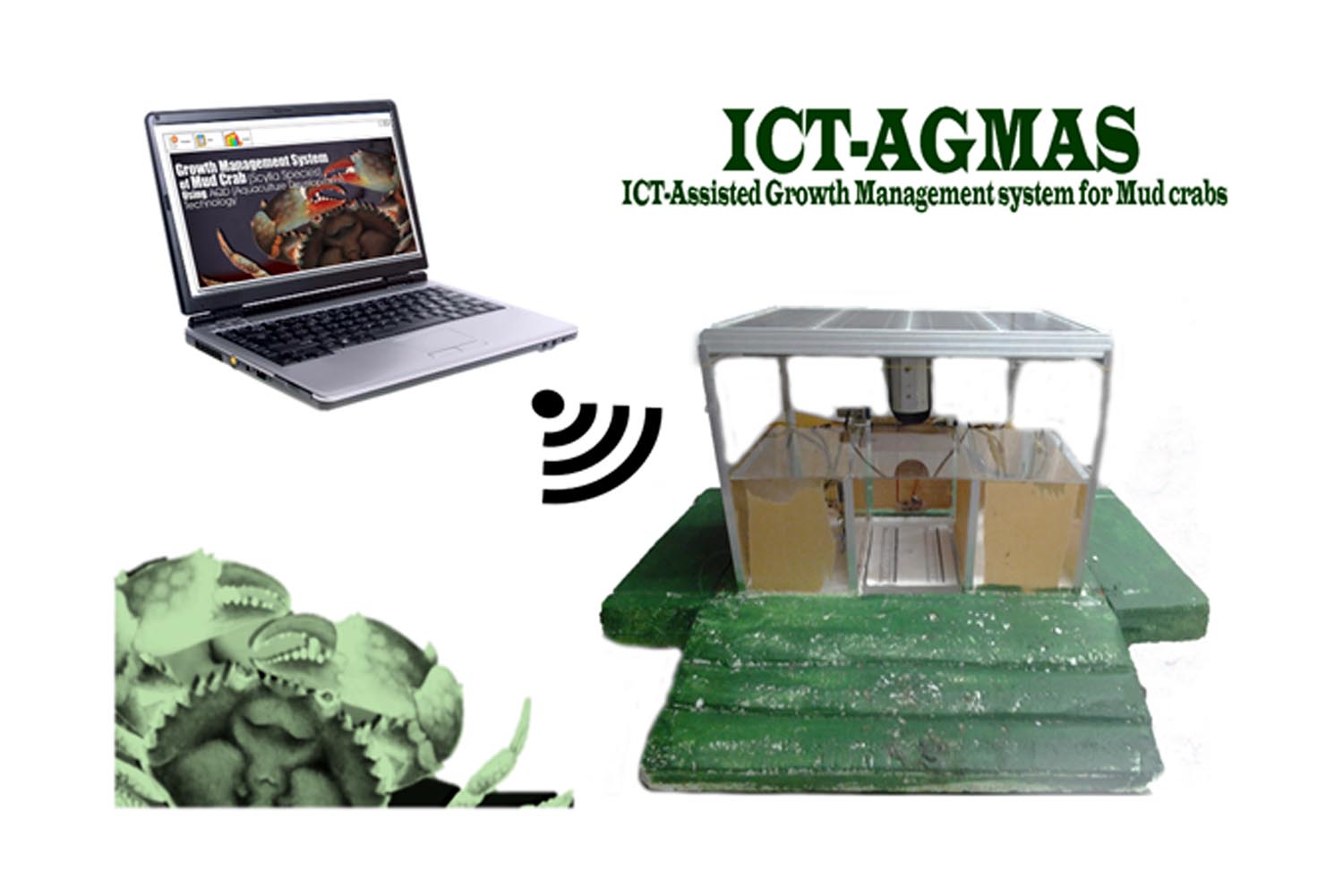A PROCESS OF PRODUCING AN ICT-BASED GROWTH MONITORING DEVICE FOR THE GROWTH OF MUD CRABS
Patent Number: PH-2-2018-001294
Patent Title: A PROCESS OF PRODUCING AN ICT-BASED GROWTH MONITORING DEVICE FOR THE GROWTH OF MUD CRABS
Description
The ICT–based growth monitoring device is designed to monitor the propagation of mud crabs with direct growth management upon conducting sampling activities. This device is also called a mud crab sampler. Its main objective is to develop an alternative system for managing the mud crab’s growth through the modern use of applying new innovative technology for mud crab farming.
Innovative Features and Benefits:
This utility model has a branding name called ICT-AGMAS which stands for ICT-based growth monitoring system intended for mud crabs. Hence, this can be lined up to the list of emerging technology in aquaculture through the application of an ICT-based mud crab sampler.
Mud crab (Scylla spp.) is one of the most economically viable aquaculture commodities in the world (Shelley & Lovatelli, 2011). Its rapid growth, distinct taste, and nutritional value contributed to its high domestic and international demand. Mud crab farming can range from fattening to grow out. Monoculture or polyculture with fish and shrimp has been used in its processing (Quinitio, 2004).
This ICT-AGMAS is designed to monitor the real-time morphometric development of mud crabs such as body weight (BW) and carapace width (CW). The device is wirelessly interconnected to a software application (copyrighted) that is equipped with a unique graphical user interface connected to a database. The utilization of this system provides mud crab sampling more conveniently for the monitoring institutions (MI) and farmers. The automated nature of this technology avoid them to manually check their crabs within the pond, thus saving time and labor costs. The duration of sampling using this product is faster than using a crab lift net or bintol. The comparison of catching time to get the BW and CW in the manual sampling through crab lift net has a long-time processed in minutes, while in the ICT-AGMAS the measures could be obtained in seconds once the crab enters the platform. The complete system is capable of the following: (a) check the growing stages of mud crab by getting the carapace width using high resolution wireless infrared camera for automated measuring crab’s size; (b) detect the crab movement from the fish pond using a sensor that senses the presence of the crab with a digital weighing scale to measure the weight; and (c) monitor the growth rate of mud crabs from the juvenile stage to marketable size. As a whole, the ICT-AGMAS on to advantages to monitor the growth of crabs from the pond using an automated database and devices connecting on the system that could be used for sampling activity by the pond managers and monitoring institutions.
Business Development Opportunity:
Mud crab farming is profitable because of its high demand in local and international markets. Unfortunately, many of the farm owners have problems in the production condition such as low production and low quality of harvested crabs. Sampling as an operational activity is usually overlooked in mud crab farming. Sampling is commonly and traditionally done using crab lift net or “bintol". Mud crab farmers periodically place these structures with baits to the different areas of the pond and wait for the cultured crab to be trapped. This method tends to be laborious and time-consuming, especially in larger production areas. The aforementioned problems have been solved through this technology. The target markets of ICT-AGMAS are the mud crab farm industry, and research and monitoring institutions in the Philippines. It can be used for research and or larger production areas. The production of this ICT-based mud crab sampler will have good market potential.
Application:
The utilization of this ICT-AGMAS provides mud crabs sampling more convenient for the farmers. The automated nature of this technology avoid the farmers to manually check their crabs within the pond through applying a laborious method like using a crab lift net, tying the claws, and manually record the body weight and carapace width using traditional weighing scale and a ruler. The movement of the crab is observed inside the platform during sampling time as the start of the monitoring procedure. The sources of data are obtained from the wireless transceiver that transfers the data into the system in real-time which are connected on both the platform and to the computer.
Interested in this IP?

